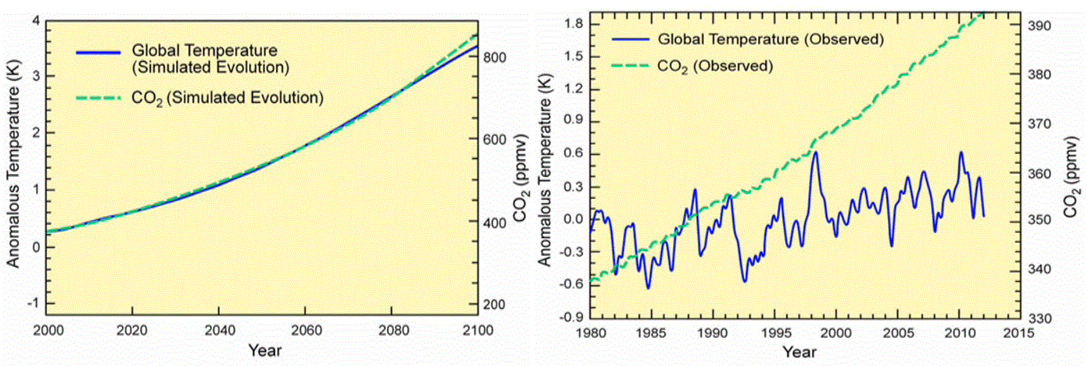Updated November 14, 2013
On April 18, 2013 Professor Murry Salby, a widely respected astrophysicist and textbook author on atmospheric physics from Macquarie University in Sydney, Australia, delivered a devastating critique of the IPCC’s AGW climate science in a lecture in Hamburg, Germany:
This appears to be a much more comprehensive presentation of some of his conclusions included in an earlier presentation. The video from the new lecture was made available on YouTube in April 2013. A report on a similar presentation made by Professor Salby in Edinburgh, Scotland on November 7, 2013 can be downloaded from here in PDF format. The report includes a one-page summary. The report is also available here in HTML format.
The Hamburg lecture announcement included the following overview:
“Atmospheric composition and temperature are found to obey a clear two-pronged relationship in the proxy record from ice cores, which represents ancient changes that operate on time scales longer than several thousand years. A similar relationship is found to be obeyed in the observed record of actual atmospheric measurements, which represents modern changes that operate on time scales shorter than a century. Supporting analysis shows that the two relationships are connected. It reveals a common physical mechanism behind changes of composition in the two records. The physics common to the records provides unified insight into recorded changes of greenhouse gases, those apparent in the proxy record of ancient composition as well as those actually observed during the 20th century. The governing relationship is then compared against the relationship that prevails in climate models, in their simulation of future changes.”
Salby concluded that anthropogenic emissions only have a slight impact on the global atmospheric CO2 concentrations and that these concentrations are mainly a consequence of temperature changes. This relationship is known up to now only from the warming phases after recent ice ages. Prof. Salby extended this relationship to our current climate development. He concluded that the divergence between atmospheric CO2 levels and temperatures “over the last decade and a half is now unequivocal. In the models global temperature tracks CO2 almost perfectly. In the real world it clearly doesn’t.”
Salby then presented two charts for comparison, which when arranged side-by-side contrast the model world versus the real world:

Summary of His Findings
He summed up his findings as follows:
“CO2 then evolves not like temperature, as it does in the model, but like the integral of temperature. In dotted blue [in the left diagram] is the integral of observed temperature. It closely tracks observed CO2 – even after the 1990s when the observed record of CO2 and temperature clearly diverged. If CO2 tracks the integral of temperature, which it clearly does, it cannot track temperature, which it clearly doesn’t.
“In the model [used by the IPCC], CO2 and temperature are related directly. In the real world they are also related, but differently. The distinctly different relationship between CO2 and global temperature represents a fundamental difference in the global energy balance between its evolution in the model world and the real world. If the global energy balance is wrong, everything else is window dressing.”
Conclusions
His findings led him to the following conclusions:
– “In the Real World global temperature is not controlled exclusively by CO2, as it is in the Model World.
– “In significant part, however, CO2 is controlled by Global Temperature, as it is in the Proxy Record.”
At the end of his lecture, Salby cited Feynman’s explanation of the scientific method, (see my Comments for a more detailed explanation), which is that hypotheses not supported by real world observations should be revised or discarded. Salby’s implication is obvious.
Although the introductions are in German, Salby’s presentation is in English. Salby’s early material is a bit technical, but it becomes more easily understandable to the non-expert during the last ten minutes.